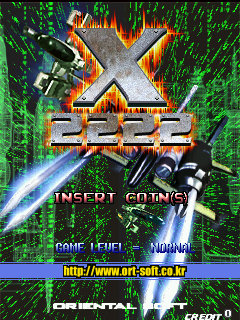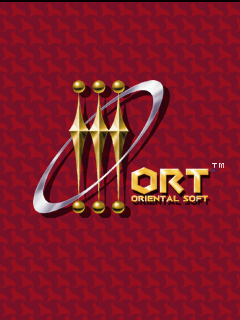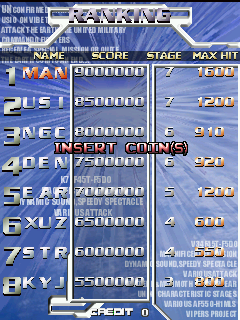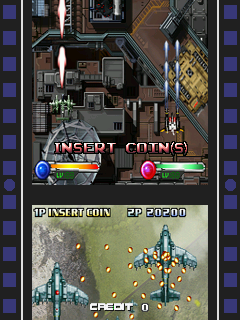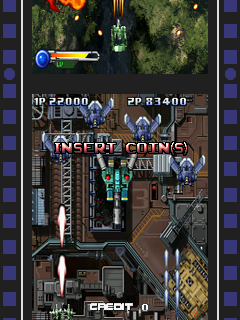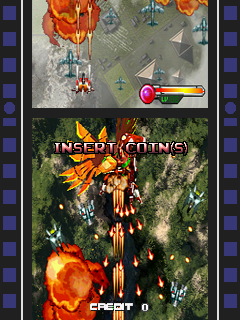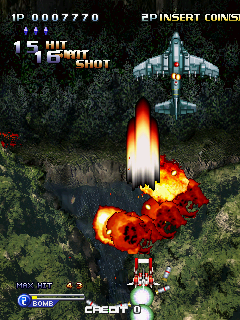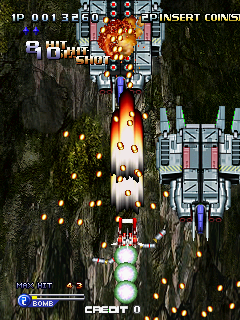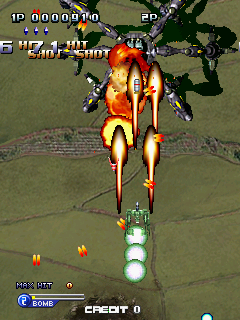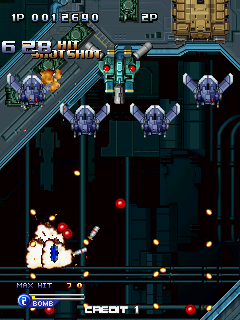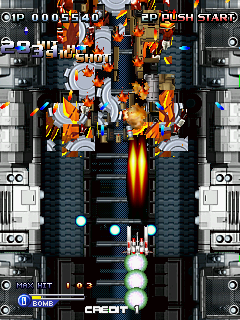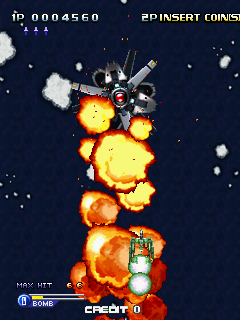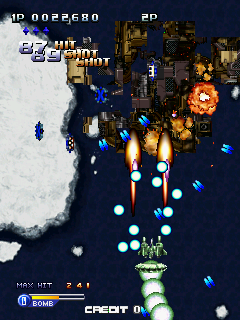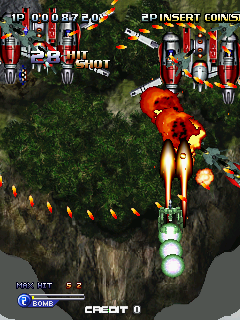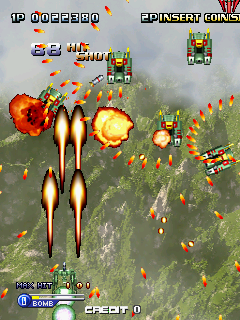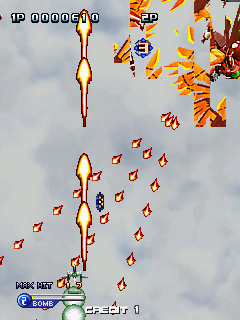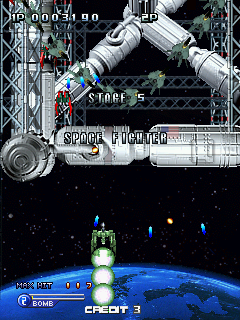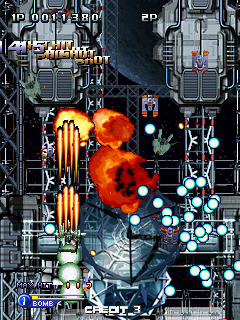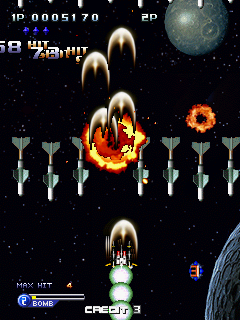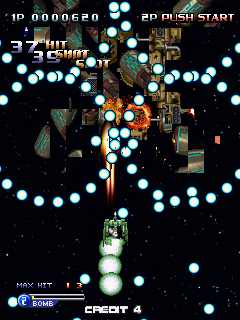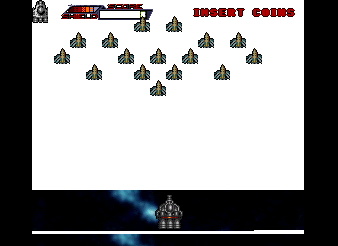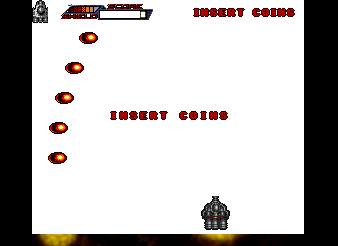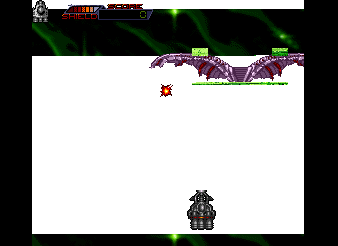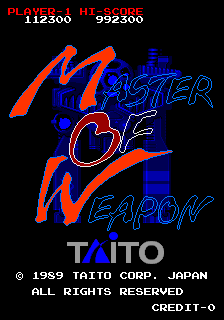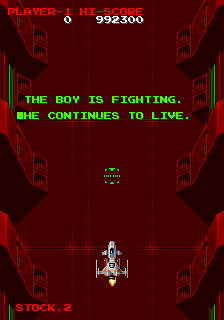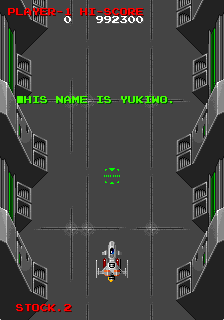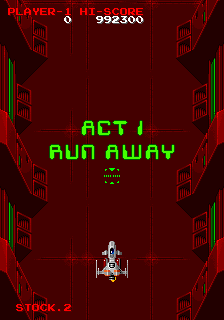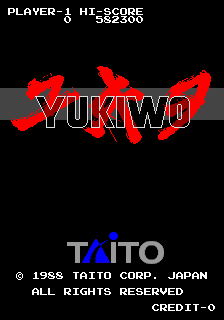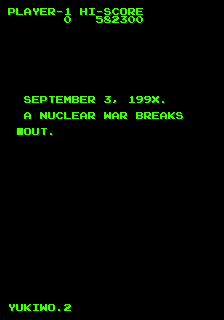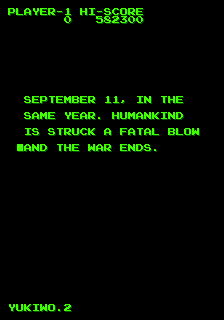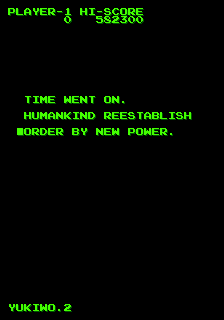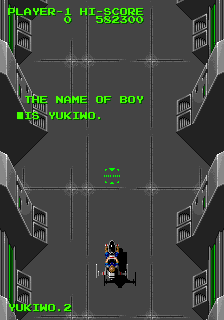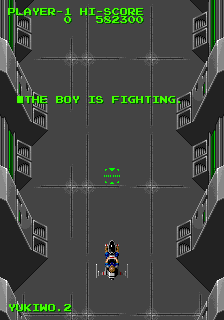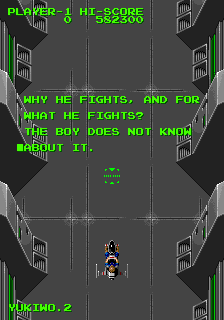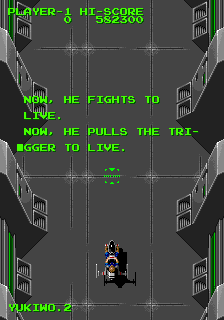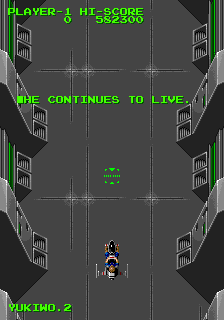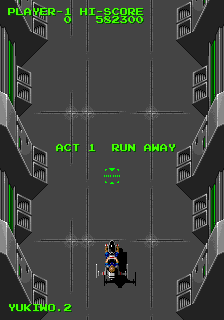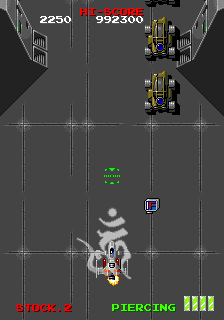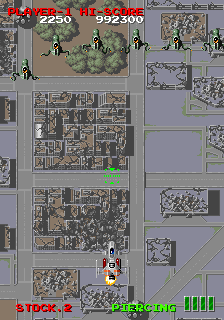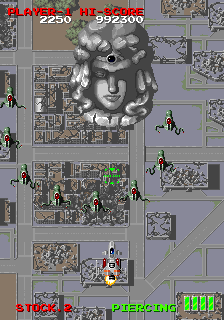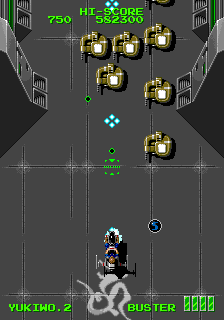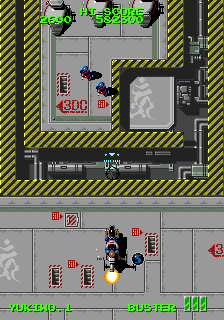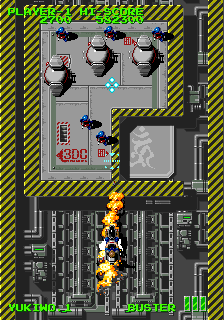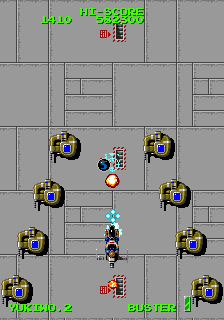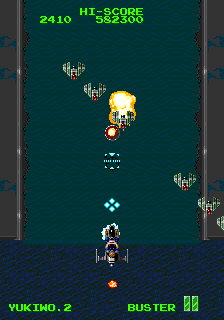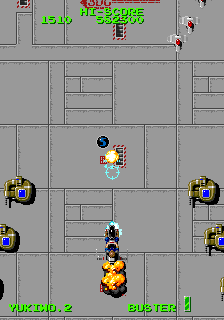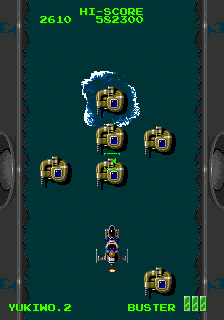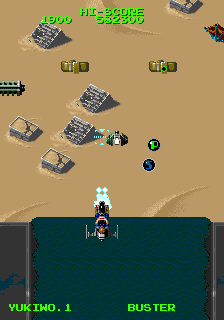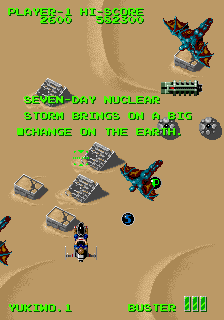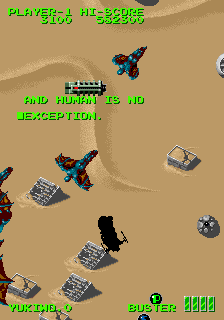I’ve looked a bit more at Mega Phoenix, and discovered one or two things. Firstly the game seems very sensitive to timing. If I bump the CPU up the 128Mhz (which is completely ridiculous for a 68k) it actually ends up transferring most of the graphics, and you can see what the game looks like, so here are some pictures of a single loop.
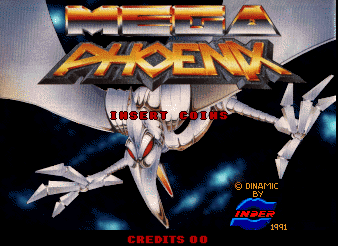
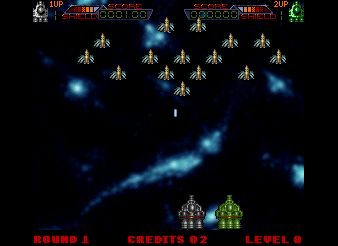
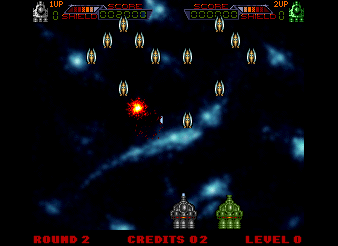
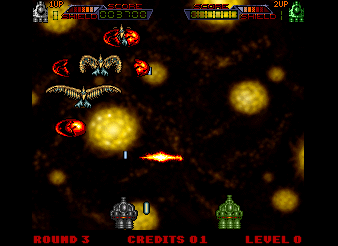

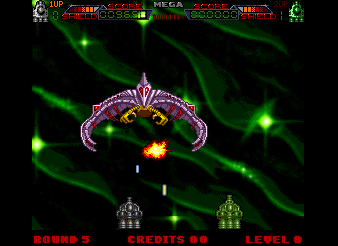
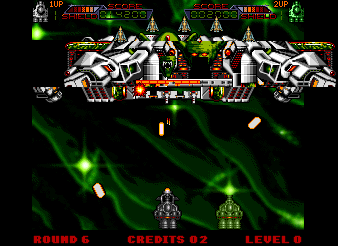
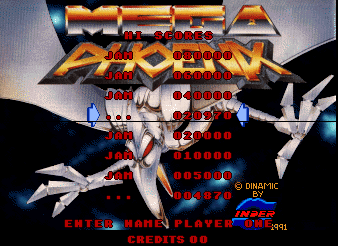
All is not well however, for one, that’s a gross hack, and also the game isn’t really stable and will crash if too much action takes place, the graphics flicker, the enemies are invisible in round 4, and the Phoenixship on Round 6 is flickery and corrupt too. That’s hardly surprising given the nature of the hack.
I haven’t yet tried to hook up the sound, and the port where the service mode and player start buttons are read is either multiplexed or some kind of serial port.
I also don’t know what 2 of the roms are used for apart from the initial interrupt vectors, possibly the missing round 4 graphics, but it doesn’t even attempt to transfer from unmapped addresses, also there’s a cross-hatch pattern in there which I’d expect to be used in service mode, but again no attempt to read anywhere but known addresses is made.
Speaking of the service mode.. The background graphics don’t get displayed there either (they are uploaded, but then erased?!), but this is what it looks like.
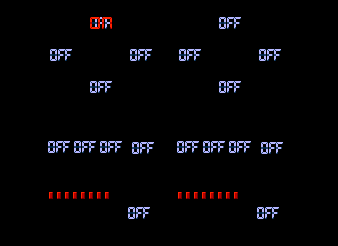
That immediately reminded me of another game I’ve worked on.. Little Robin
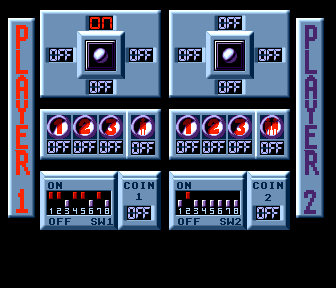
It’s the same service mode. What else did this tell me? That the VDP I struggled to emulate in Little Robin is actually.. An unbadged TMS34010. I’ve confirmed this by hooking up a TMS34010 in the Little Robin driver, and it does indeed upload code for it and run it, however the backgrounds don’t appear (much like the MegaPhoenix Service mode)
I’m not sure if there are flaws in our TMS34010 emulation, or they both need a better hookup of something somewhere so for now I’ve just left Little Robin using my old simulation of the VDP.
What it does make me wonder is if Inder / Dinamic were actually the ones who made Little Robin for TCH. The Test Mode being identical is more than a little suspicious.
Note, I don’t consider MegaPhoenix playable yet due to the issues I’ve mentioned. I don’t know how much work it will be, it depends what the source of the actual bugs is.

